|
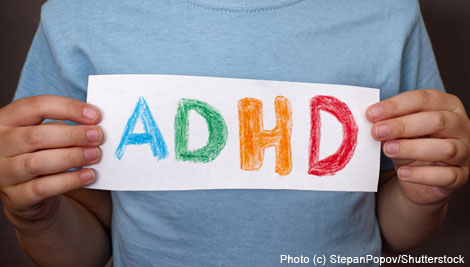
The Right to be Odd
By Jan Fortune-Wood
All too often, education in our society is little more than an arm of the state that insists on constantly extending its controlling position by spreading its jurisdiction into non-educational welfare concerns. This is most apparent in the rise of disorders and syndromes that are attributed to children who find it difficult or impossible to fit into the school structure and so exhibit “behavioral problems.” The rhetoric goes like this: to get a good education children have to be able to acquire certain behavioral traits that will enable them to learn in a given environment. It is necessary to equip children to conform to the environment so that they can benefit from education. Children who resist this conformity must be suffering from some type of “disease” that threatens their educational functionality. This being so, interventions – both medical and psychological – are justified and necessary.
Such thinking allows more and more of normal childhood or even human behavior per se to be diagnosed as a disease. The fashions come and go. ADHD was once flavor of the month – a diagnosis that encouraged worried parents in need of real support to label anything from a kinetic learning style to youthful resistance to delayed gratification in a four-year-old as a sign of a malfunctioning brain. Labeling a child with this so-called disease took very little notice of the facts: facts such as the reports of home educators that symptoms disappeared once children were removed from noisy, chaotic classrooms full of stressed children and harassed teachers, facts such as the rising numbers of children who “developed” ADHD at later and later ages as stress at school rose. With the blinkers firmly on, mainstream education and welfare thinkers were convinced that the disease had to be in the children, not in the environment.
While ADHD diagnoses still flourished and increasing numbers of children were subjected to Ritalin (which, in my opinion, is little more than the illegal street drug Speed by another name) another syndrome emerged as front runner. Asperger’s Syndrome was once little heard of; now it is commonplace, proliferating in classrooms everywhere, amongst stressed young children who are not fitting in with the increasingly narrow definition of what it is to be normal in a highly structured regime.
In an ethos where the product mentality is operating, a child who waits until everyone has got started on the work the group has been instructed to do, before asking, “And what should I do?” attracts a host of faulty product labels. Options are worked through. Should the child be seen as “deaf”? Should the child be seen as “deliberately annoying” and brought up to specification with behavioral modification? Faced with the prospect that their child is seen as a stupid or weak product, parents, rather than questioning the fundamental assumption that children are products at all, will all too often resort to searching for a label to justify why their child is a “faulty product”. Faced with a burden of angst and guilt, it is not surprising that many parents are relieved when a scientific sounding diagnostic label comes along to alleviate their worst fears, which are that they have caused their child to be a faulty product.
Under the protection of diagnosis, the list takes on the authority of not being merely a group of commonplace and wrongly attributed labels that could be used to diminish the humanity of thousands of other children who display their individuality, but rather an explanatory framework for the child’s inability to function within the demands of the institution. This does not give rational credibility to such diagnoses.
The world is full of children (and adults) who talk before others have finished their turn, who introduce non-sequiturs into conversation or who use language very literally. Many children have apparently quirky fears. Not everyone responds to social signals and eye gestures. Not everyone likes to be hugged. There are hosts of people who can amaze us with memories all the way back to babyhood, but still forget the last thing that was said to them. Many people never conquer spelling and handwriting, but still soak up factual knowledge or become totally engrossed in specific topics to the exclusion of all else. It is not unusual to find able people who seem to have great co-ordination in an activity like playing the violin, but nonetheless wander around with untied shoe laces, seeming clumsy, awkward, and ill at ease in their bodies.
The list of differences, many of them subtle, some of them slightly surreal could go on. Having a unifying label for the set of characteristics that make up a parent’s perceptions of one child at just one moment in time is no substitute for taking the child seriously as an autonomous individual in her own right. The problem with such diagnoses is that whilst they might describe some true things about some people some of the time, they essentially fail most children in two important ways.
Firstly, they reduce a child to a list of flaws and insist that the child must be treated according to adult’s worst perceptions of him. Secondly, they refuse to acknowledge that many so-called syndromes are only significant in certain social contexts: stressed classrooms, learning environments where stillness is more important than what is learnt, learning environments where a bell rings to change the subject being studied just at the moment the child begins to engage with the initial subject, for example. The “illness” depends on the social context being present to provoke the symptoms and yet what society most commonly tells us to adjust is not the environment, but the child.
Within schools, more and more children whose individuality does not fit them to an increasingly restrictive environment are being diagnosed and “treated.” The costs are enormous. There are economic costs to fund the health service and resource the special educational provisions committed to forcing children to fit into the system, as well as horrendous personal costs, which have the knock-on effect of massive social costs in the wasted lives of young people who are harmed.
The monolithic system of “free” compulsory state education has done a great deal to convince us that children who are perceived as square pegs are being helped if they are treated in such a way that they will eventually fit into round holes. The latest fashion in child labeling and fixing comes in the form of psycho-babble’s most daring “disorder” to date. ODD stands for oppositional defiance disorder. The crux of this diagnosis, which will soon outstrip others in popularity as a control device to use against children who show any difference at all, is that a child is sick, disordered, and in need of either behavior modification or drug treatment or both if she resists authority.
To actually make having your own will a disease is at once inspired and wicked in my opinion; ODD has to be one of the trump cards of coercion. It is a diagnosis with an incredible list of unquestioned assumptions. Is the role of parenting to assist children to nurture their own autonomy and learning or to lay down the law and be obeyed at all costs? We might debate about where we locate ourselves on that spectrum, but I believe that only the most extreme or fascist dictators hoping to break the wills of a whole generation of youth would wish for children who obey without question simply because the speaker is an adult or parent. A preponderance for cultural gullibility in mainstream thinking combined with a constant and unhealthy desire to have children who are mere blank canvasses sadly give certain psychologists carte blanche to go on making up this rubbish with impunity.
We need to begin asking some hard questions. Is it the children who are faulty? Or is it that the system, which requires all children to imbibe an entire curriculum in a set order regardless of its intrinsic interest to individuals, is wasteful, inefficient and oppressive? Are the children mentally ill or is the system a poor fit for the vast wealth of highly individual learning styles, creativity and human range of personality that exist in our children? Are we so afraid of human nature and so mistrusting of children in particular that we believe that without a bland, one-size-fits-all approach we will fall into a state of uneducated chaos?
Individual children are being consigned to a medicated hell to satiate this pessimism and fearfulness. It is not only the children, but, ultimately, all of us who lose. Children are not products and they do not exist to fulfill a list of required functions for society. If we nurture children to pursue intrinsic motivation and self-fulfillment, the spin-offs for both individual and society at large will be optimally creative and beneficial. It is not in anyone’s best interests that children should be forced to fit into a homogenous system at any price. It is a tragic waste of real creativity and learning potential, one that does not need to happen when schooling is not compulsory.
There is a certain irony in the fact that the latest disorder to sweep through unsuspecting children bears the acronym for the word “odd.” Individuality, idiosyncrasy and the persistent questioning of absolutely everything are hallmarks of genius and creativity, but not to be tolerated by mainstream education, it seems. The beauty of the alternatives we espouse is that they give our children the right to be odd; or simply to be themselves.
Living consensually with our children and nurturing their intrinsic motivation and learning means that instead of reducing children to their flaws (or, even worse, to an adult perception of their flaws) and then teaching them according to the label’s prescriptions, we treat our children as real individuals, sometimes with problems, sometimes making mistakes, but unique, trustworthy and fully human.
Living consensually with our children does not mean that we put on rose tinted spectacles and ignore real problems. Some children have specific learning difficulties or particularly idiosyncratic learning styles that demand some input and assistance. What it does mean is that we will treat each problem situation as it arises, rather than responding mechanically. It also means that we will take into account problems that are not solely about psychology, but also about structures and social contexts. We have the flexibility to fit the learning environment to the individual rather than struggling to do the opposite. Of course, good psychology might be helpful at times and learning to fit into certain environments to meet intrinsic goals might be an aim worth pursuing. But living outside the mainstream gives us time to pause and seek more complex solutions to learning and life than simply and sadly adjusting our children with behavioral programs and drugs. Long may we celebrate a certain amount of being odd!
Jan Fortune-Wood is a freelance writer, poet, and parenting adviser, who home educated her four children and lives in the UK. She is the author of four books on home education, autonomous education and non-coercive parenting, “Doing It Their Way”; “Without Boundaries”; “Bound To Be Free”; and “With Consent."
Copyright © Life Media
Privacy Policy
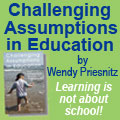 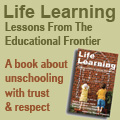 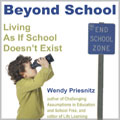
 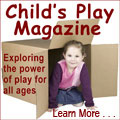 
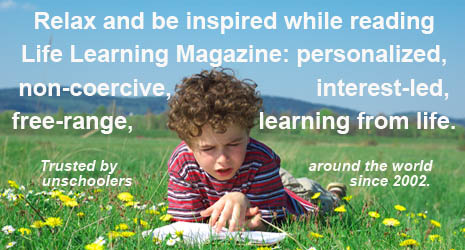
|

